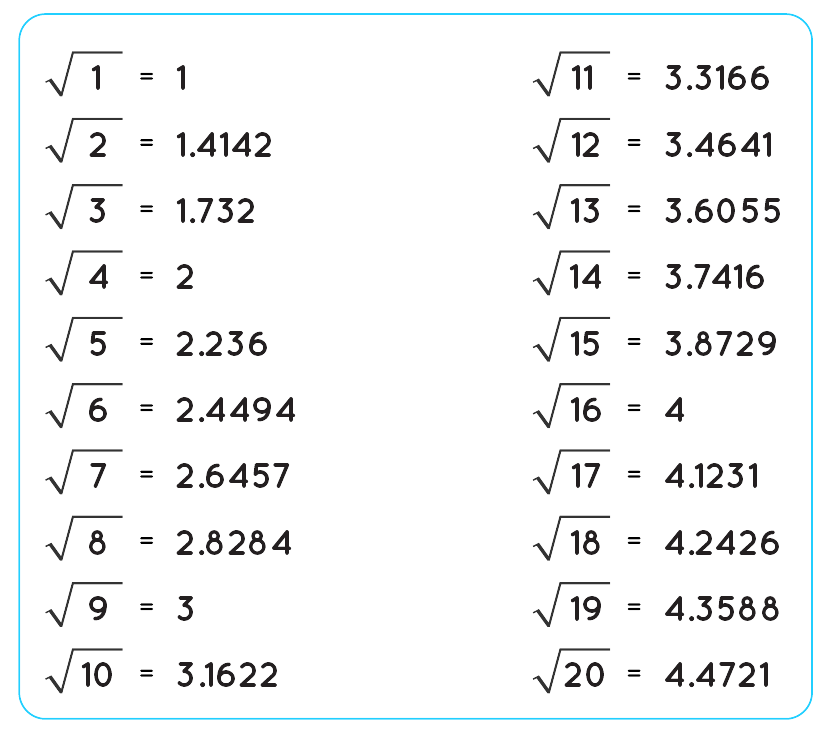
The Root of Square Root: A Comprehensive Guide In 2024
Ramzanmughal103@gmail.com October 15, 2024 ArticleThe concept of the “root of square root” may initially seem complicated, but it’s a fundamental part of mathematics that has real-world applications in fields like engineering, physics, and computer science. In this article, we’ll delve into what the root of square root means, its significance, and how to calculate and apply it. By the end of this guide, you’ll have a deep understanding of this topic and feel confident using it in various mathematical problems.
What is the Square Root?
Before we dive into the root of square root, it’s essential to grasp the basic concept of the square root itself. The square root of a number is a value that, when multiplied by itself, gives the original number. For example:

- The square root of 9 is 3, because 3×3=93 \times 3 = 93×3=9.
- Similarly, the square root of 16 is 4, because 4×4=164 \times 4 = 164×4=16.
Square roots are generally written using the radical symbol (√), so we can express the square root of a number xxx as x\sqrt{x}x.
The Root of Square Root Explained
Now that we’ve established what a square root is, let’s talk about the square root. The phrase “root of square root” refers to finding the square root of a number, and then finding the root of that result. This can be expressed mathematically as x\sqrt{\sqrt{x}}x or x4\sqrt[4]{x}4x, which is known as the fourth root of xxx.
Understanding the Root of Square Root in Steps:
- Find the Square Root: Take the square root of the original number.
- Find the Square Root of the Result: Take the square root of the square root you just calculated.
For example, if we want to find the root of square root for the number 16:
- The square root of 16 is 4.
- The square root of 4 is 2.
So, the root of square root of 16 is 2.
Mathematical Representation of Root of Square Root
The square root can be written in different ways depending on the notation you prefer. The most common ways include:
- x\sqrt{\sqrt{x}}x
- x4\sqrt[4]{x}4x
- (x1/2)1/2=x1/4(x^{1/2})^{1/2} = x^{1/4}(x1/2)1/2=x1/4
These are all equivalent ways of expressing the same idea: the fourth root of a number, which is the result of finding the square root twice.
Root of Square Root in Algebraic Terms
In algebra, the concept of roots extends beyond just square roots. Mathematically, we can generalize roots to any degree, but when we specifically talk about the square root, we are finding the fourth root of a number.
In terms of exponents, the square root of a number xxx is written as x1/2x^{1/2}x1/2. When you take the root of square root, you’re essentially taking the square root twice, which can be written as (x1/2)1/2(x^{1/2})^{1/2}(x1/2)1/2. Using the laws of exponents, we can simplify this expression to:(x1/2)1/2=x(1/2)×(1/2)=x1/4(x^{1/2})^{1/2} = x^{(1/2) \times (1/2)} = x^{1/4}(x1/2)1/2=x(1/2)×(1/2)=x1/4
Thus, finding the square root is the same as finding the fourth root of the number.
Visualizing the Root of Square Root
Visualizing the concept of the root of square root can be helpful. Let’s use an example:
Consider the number 256:
- The square root of 256 is 16.
- The square root of 16 is 4.
So, the square root of 256 is 4. If you were to graph these operations, you would see a decreasing trend, where each subsequent square root results in a smaller value.
Applications of Root of Square Root
1. Physics and Engineering
In physics, the root of square root is often encountered when dealing with problems that require the extraction of fourth roots. For example, if you’re working with wave mechanics or certain equations in quantum physics, you might encounter the need to calculate the square root to simplify your formulas.
2. Computer Science
In computer science, the concept of roots, including the square root, plays a significant role in algorithm analysis, especially when you’re dealing with time complexities involving exponential growth or decay.
3. Architecture and Design
The root of square root also finds applications in architecture and design, particularly when dealing with proportional scaling. In certain designs, understanding how values scale with the fourth root can help ensure that proportions remain aesthetically pleasing and structurally sound.
Calculation Techniques for Root of Square Root
There are several ways to calculate the root of square root depending on the tools at your disposal.
1. Manual Calculation
For smaller numbers, you can manually calculate the square root by performing two consecutive square root operations. For example, to find the square root of 81:
- The square root of 81 is 9.
- The square root of 9 is 3.
Thus, the root of square root of 81 is 3.
2. Using a Calculator
Most scientific calculators have a built-in function for square roots, and some even allow you to directly compute the fourth root. However, if your calculator doesn’t have a specific fourth root function, you can find the square root twice to achieve the same result.
3. Using Software
Mathematical software like MATLAB, Mathematica, or even Python can quickly compute the square root for large numbers. In Python, for example, you can use the following code to compute the fourth root of any number:
pythonCopy codeimport math
x = 81
result = math.sqrt(math.sqrt(x))
print(result)
This code will output 3.0, which is the square root of 81.
Special Cases of Root of Square Root
1. Perfect Squares
When working with perfect squares, the root of square root is often an integer. For example:
- The root of square root of 16 is 2.
- The root of square root of 81 is 3.
- The root of square root of 625 is 5.
2. Irrational Numbers
If the original number isn’t a perfect square, then the result of the root of square root may be an irrational number. For example:
- The square root of 10 is approximately 3.162.
- The square root of 3.162 is approximately 1.78.
Thus, the square root of 10 is approximately 1.78, which is an irrational number.
3. Negative Numbers
For real numbers, square roots of negative numbers are not defined. However, in the realm of complex numbers, square roots of negative numbers do exist and can be extended to the root of square root. In complex analysis, we can use imaginary numbers to calculate roots of negative numbers.
Practice Problems Involving the Root of Square Root
Here are a few practice problems to help you solidify your understanding of the root of square root:
- Find the square root of 144.
- What is the square root of 625?
- Calculate the square root of 1000 (round to two decimal places).
- Find the square root of 1.
Conclusion
The root of square root may seem like an abstract concept, but it’s simply the result of applying the square root function twice to a given number. Whether you’re dealing with integers, irrational numbers, or complex numbers, the square root is a valuable mathematical operation that shows up in various fields of study, including physics, engineering, and computer science.
Understanding the square root allows you to tackle more complex mathematical problems with ease and opens the door to exploring higher-order roots. Now that you’re familiar with this concept, you can confidently apply it in real-world scenarios and mathematical computations.
Leave a Reply